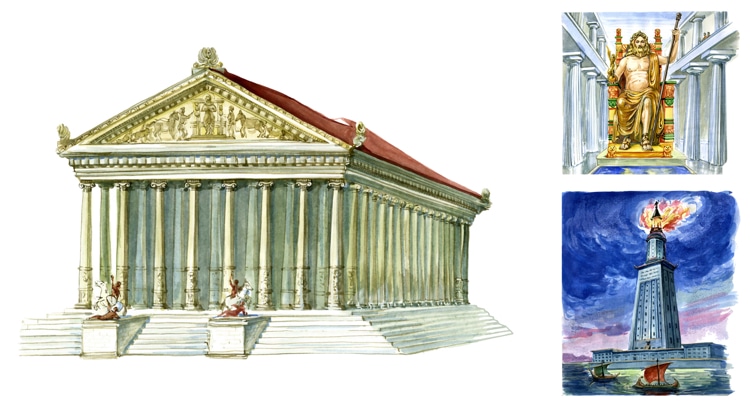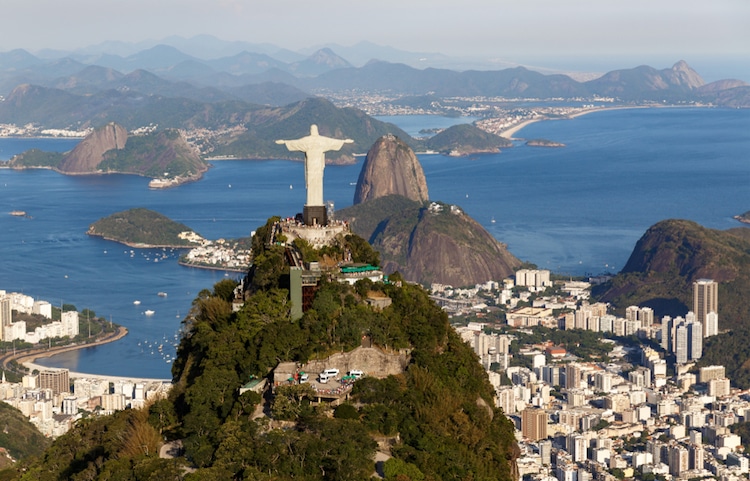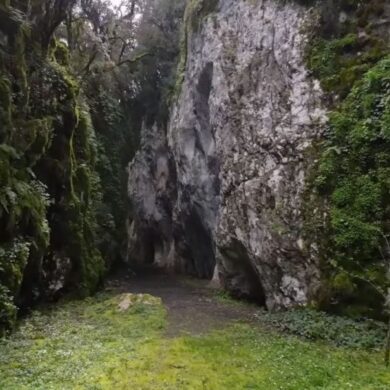By Jessica Stewart
Central photo Clockwise from right: Temple of Artemis, Statue of Zeus, Lighthouse at Alexandria. (Illustrations: garanga via Shutterstock)
We’ve all heard of the Seven Wonders of the World, but what are they exactly and where do they come from? To get to the origins of the original “must-see” list, we need to go back to Ancient Greece. Called themata—Greek for “things to see”—the list came about from writers of guidebooks and sightseeing guides. Yes, that’s right, people were traveling in Ancient Greece.
This shouldn’t come as a surprise, given the Greek Empire’s expansion into areas that allowed them to mingle with Egyptian, Persian, and Babylonian cultures. The list we now know as the Seven Wonders of the Ancient World didn’t come from just one writer, but is the compilation of several different lists over time.
For instance, in 225 BC the mathematician Philo of Byzantium wrote a book titled The Seven Sights of the World. Prior to this, historian Diodorus Siculus also wrote his list of sites not to be missed and along the way many writers contributed their thoughts. The famed historian Herodotus wrote his themata as early as the 5th century BC and, eventually, writers seemed to settle on a standard set of monuments.
What are the Seven Wonders of the Ancient World?
Sadly, of the seven sites, only the Great Pyramid at Giza still exists, but a look at the list of ancient wonders gives insight into the incredible architecture and construction abilities that existed in the ancient world. And even those that have long since fallen into ruin have continued to inspire artists who use their imaginations to put a visual to the written descriptions.
GREAT PYRAMID AT GIZA, EGYPT
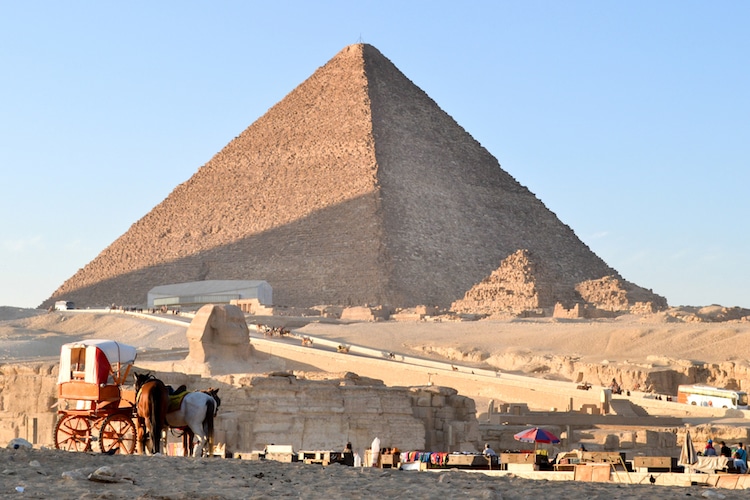
Photo: Veronika Kovalenko via Shutterstock
The only surviving ancient wonder, the Great Pyramid at Giza remains an incredible example of Egyptian architecture. A visual representation of the ancient Egyptians’ sophistication, it was the tallest man-made structure in the world for 3,800 years. The oldest of the seven wonders, Egyptologists believe it took just 10 to 20 years to build. Construction on the tomb ended around 2560 BC with 2.3 million stone blocks used in its construction.
HANGING GARDENS OF BABYLON
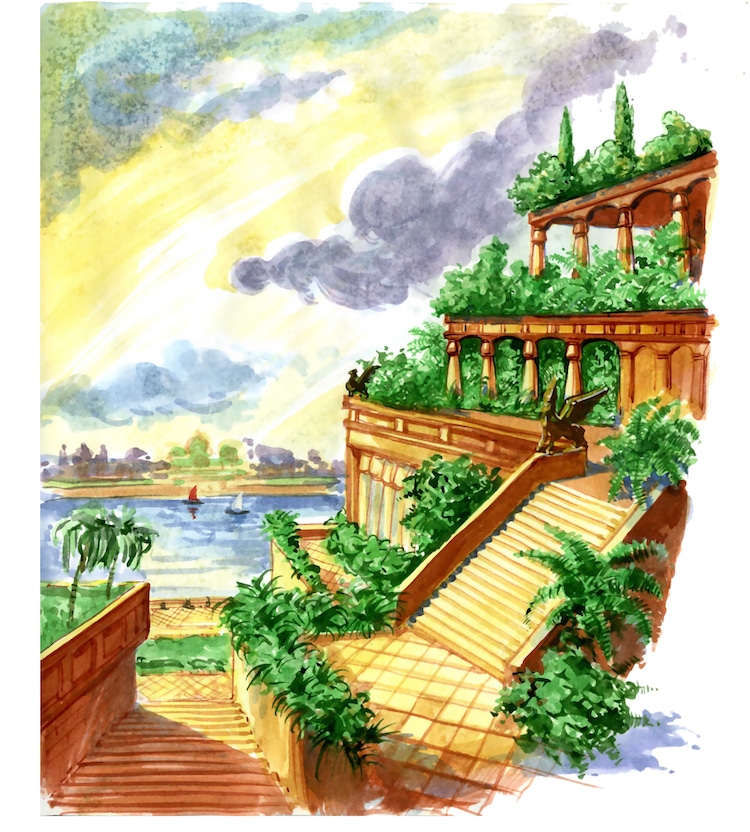
Photo: garanga via Shutterstock
These extravagant hanging gardens have inspired artists for centuries, each of whom can only imagine the plants and vines strewn across different tiers. Said to have been located in ancient Babylon—present-day Iraq—legend has it that the gardens were built by King Nebuchadnezzar II, who ruled between 605 BC and 562 BC. The gardens, which were spread over terraces up to 75 feet above ground level, were created for the king’s wife, Queen Amyitis, who missed the greenery of her home in the Median Empire (now Iran). Unfortunately, the Hanging Gardens of Babylon are the only ancient wonder that scholars don’t know the exact location of. In fact, though the gardens are written about extensively in Greek and Roman literature, no firsthand accounts are known, leading some scholars to believe the site may be a work of fantasy.
STATUE OF ZEUS AT OLYMPIA, GREECE
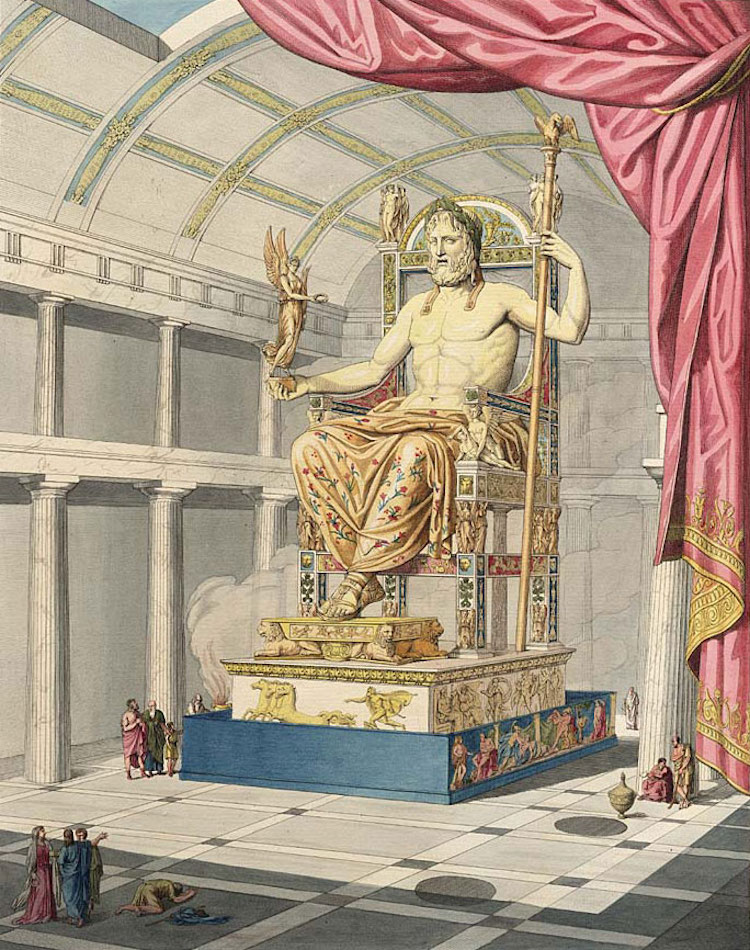
Olympian Zeus in the sculptured antique art of Quatremère de Quincy. 1815. (Photo: [Public domain or Public domain], via Wikimedia Commons)
Created by Phidias, a masterful sculptor who directed the construction of the Parthenon, the Statue of Zeus at Olympia was prized for its stunning beauty. The 43-foot-tall sculpture was created around 435 BC and sat inside the Temple of Zeus. The sumptuous sculpture was a fitting representation of the king of the Gods, featuring ivory and gold panels laid over a wood framework. No copy was ever made in either marble or bronze and the sculpture was later dismantled in the 5th or 6th century AD when the pagan religion was banned. Some historians record that it was simply destroyed, while others write of it being carried to Constantinople and burned in a fire.
TEMPLE OF ARTEMIS AT EPHESUS
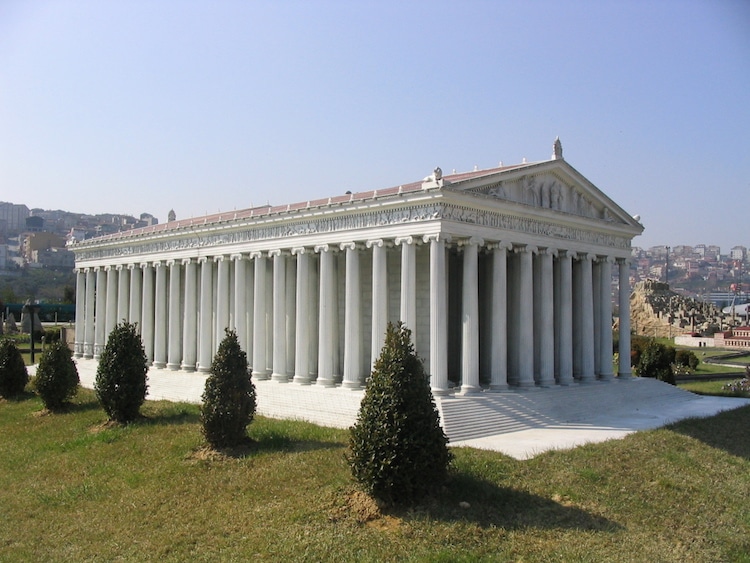
Reconstruction of the Temple of Artemis in Istanbul Turkey (Photo: Zee Prime at cs.wikipedia [GFDL, CC-BY-SA-3.0or CC BY-SA 2.5], from Wikimedia Commons)
This Greek temple, located in present-day Turkey, was rebuilt three times before its final form became part of the list of wonders. Dedicated to Artemis—the Greek goddess of hunting, animals, and childbirth—as she was heavily venerated and her sumptuous temple certainly shows this. The most ornate parts of the temple were constructed between 550 BC and 350 BC, and were painted by the most famous artists of the time. In its final form, the temple was 450 feet long and contained over 125 columns. Almost completely destroyed in 262 AD by the Goths, it’s unclear if it was ever fully rebuilt. Today, all that remains are ruins that were excavated in the 19th century, which are now on display in the British Museum in London.
MAUSOLEUM AT HALICARNASSUS
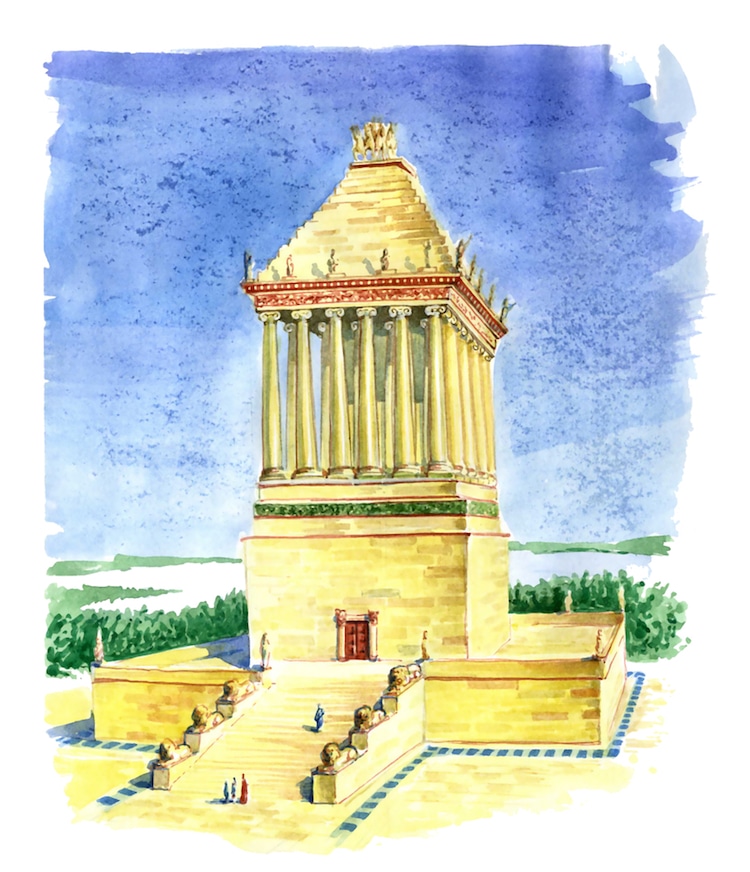
Photo: garanga via Shutterstock
Lasting longer than some other monuments on the list, the Mausoleum at Halicarnassus endured until a series of earthquakes brought the building down at some point between the 13th and 16th century AD. Now, it lays in ruins in modern-day Bodrum, Turkey. It was constructed around 350 BC as a tomb for a satrap named Mausolus and his wife—who was also his sister—Artemesia. As satrap, who were governors of the Persian Empire’s provinces, Mausolus poured his incredible wealth into the tomb, which was completed after his death by Artemesia. At the time, Halicarnassus was a new capital, wishing to show its glory. As a result, they created a marble covered masterpiece. It was so grand that Mausolus’ name became synonymous with tombs, hence the word mausoleum.
COLOSSUS OF RHODES
The monumental sculpture—which was roughly the height of the Statue of Liberty—has a brief, but impactful lifespan, surviving about 60 years before its destruction at the hands of an earthquake. Completed in 280 BC, the statue depicts the sun god Helios and was erected on the island of Rhodes in Greece. The Colossus was created to celebrate the island’s victory over Cyprus, whose king has attempted to invade Rhodes. In fact, the sculpture was made from melted iron and bronze from the enemy’s weapons.
LIGHTHOUSE AT ALEXANDRIA, EGYPT
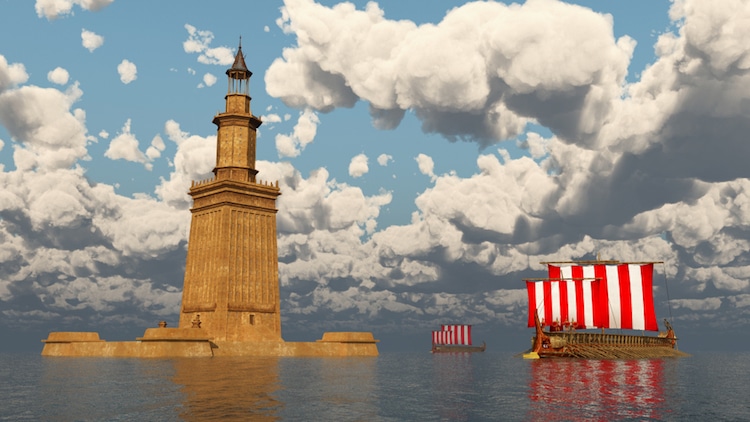
Photo: Michael Rosskothen
The Lighthouse at Alexandria also had an extended lifespan, enduring from 280 BC until around 1323 AD. In its time, it was one of the largest manmade structures in the world, until a series of earthquakes starting in the 10th century AD caused it to be abandoned. The Lighthouse was about 330 feet tall and was built by the Ptolemaic Kingdom, an Egyptian dynasty that came into power after the death of Alexander the Great. A central figure in guiding ships in and out of the busy harbor, the monument can even be seen on ancient coins. In 1994, French archaeologists found some of the Lighthouse’s remains submerged in Alexandria’s harbor.
Next: Led by the group Seven Inspired by this ancient list, several new versions of the 7 Wonders of the World have been created, from industrial miracles and natural beauties, up to a new list of new modern wonders.
Seven Wonders of the Natural World
In 1997, CNN and Seven Natural Wonders created the Seven Wonders of the Natural World to celebrate the beauty of Mother Nature. Spanning all seven continents, the list gathers both well-known attractions as well as hidden jewels of the natural world.
MOUNT EVEREST
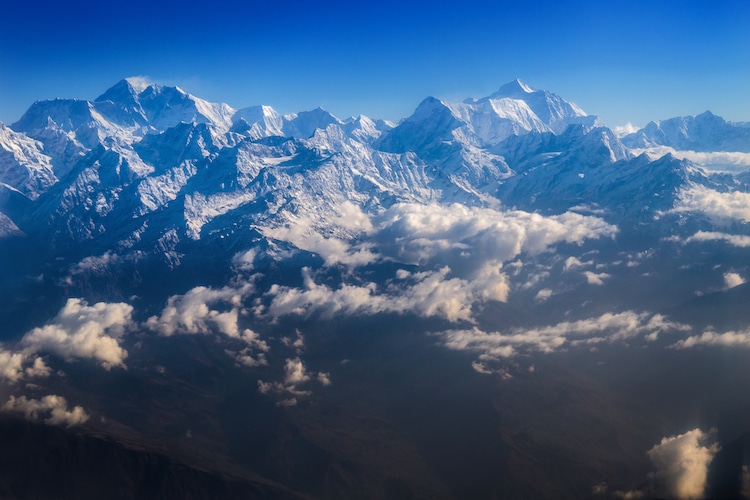
Photo: Petr Kopka via Shutterstock
The world’s highest mountain above sea level, Mount Everest soars up 29,029 feet. Located in the Himalayas, the iconic peak is a thrill seeker’s dream. Tenzing Norgay and Edmund Hillary were the first to make the ascent in 1953, after three decades of failed attempts by others. Interestingly, the summit point of Mount Everest is also the international border between Tibet and Nepal.
GREAT BARRIER REEF
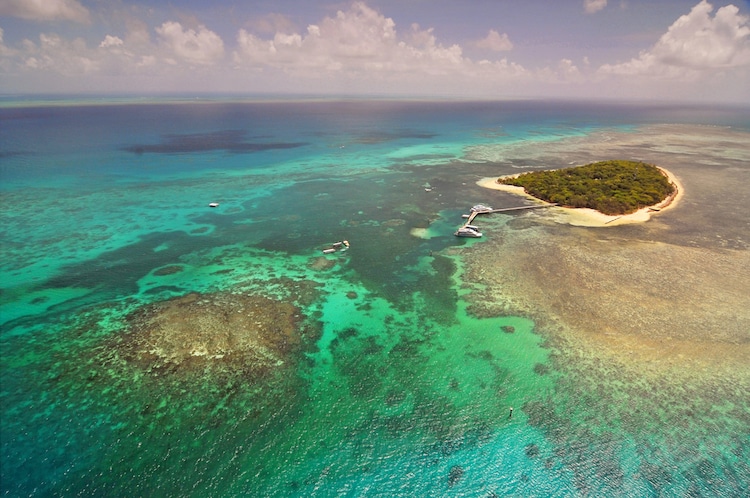
Photo: Cezary Wojtkowski via Shutterstock
Sadly, this natural wonder is in a bit of trouble. (In an effort to preserve it, the Australian government pledging $397 million to save the Great Barrier Reef.) Comprised of thousands of individual reefs spread across 1,400 miles, the Great Barrier Reef can been viewed from space. The sheer magnitude of marine life is astonishing, with the reef hosting many endangered and rare species. Unfortunately, coral bleaching due to rising water temperatures has killed large portions of the reef, something conversationists are hoping they can combat.
VICTORIA FALLS
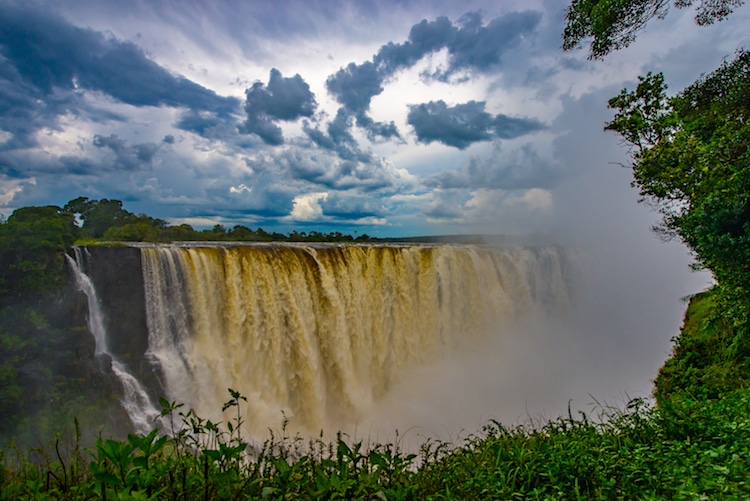
Photo: Antonio Rodrigues Peyneau via Shutterstock
Also known as “The Smoke that Thunders,” Victoria Falls is located at the border between Zambia and Zimbabwe along the Zambezi River. It was named by Scottish explorer David Livingstone during his African voyage in 1855 after Queen Victoria of England. Its indigenous name, Mosi-oa-Tunya, also continues to be used and while the falls aren’t the world’s highest or widest, they are considered the largest. With a width of 5,604 feet and height of 354 feet, Victoria Falls is the world’s largest sheet of falling water.
GRAND CANYON
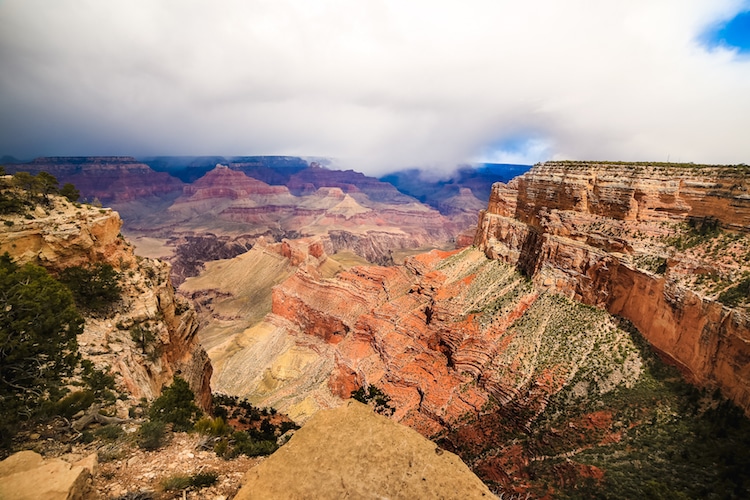
Photo: ruslan p via Shutterstock
North America is represented on the list by Arizona’s Grand Canyon, a 277-mile-long canyon carved out by the Colorado River. A true depiction of how powerful nature is, the Canyon is up to 18 miles wide at its largest. While it’s not the deepest canyon in the world, the 17 million-year-old wonder is known for its sheer size and dazzling colors.
NORTHERN LIGHTS
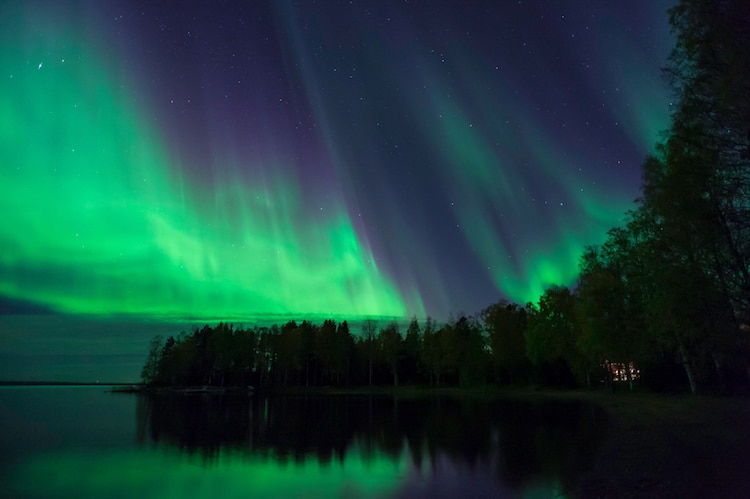
Photo: Erkki Makkonen via Shutterstock
The Northern Lights, or Aurora Borealis, is a dazzling natural light show that has been attracting travelers, photographers, and nature lovers to polar regions for centuries. A favorite of nature and landscape photographers, it’s no wonder we often feature beautiful photographs of the Northern Lights in Iceland, Norway, and other areas of the globe.
PARÍCUTIN
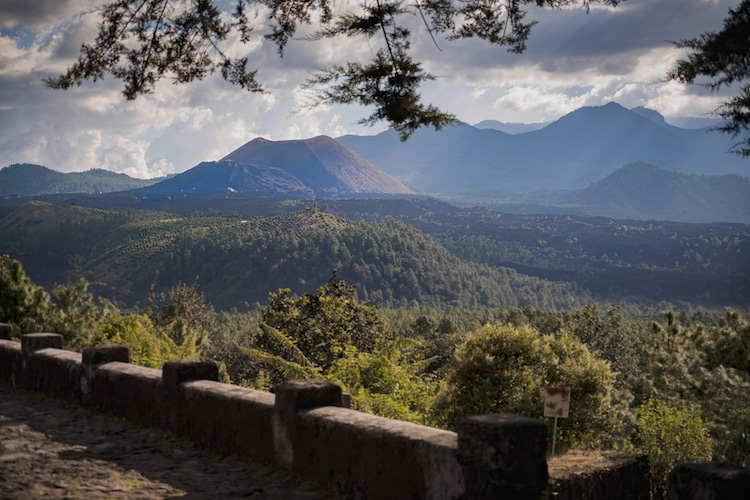
Photo: Alejandro Roa via Shutterstock
Parícutin may not be a name as familiar as some of the other wonders on the list, but it’s no less deserving. This cinder cone volcano is located 200 miles west of Mexico City, in the Mexican state of Michoacán. What makes Parícutin especially notable is that scientists were able to observe its entire lifecycle—a first. Over the course of the 1940s, a fissure grew in a cornfield, with the volcano growing in height to 1,391 feet and then erupting over the course of 19 years.
GUANABARA BAY
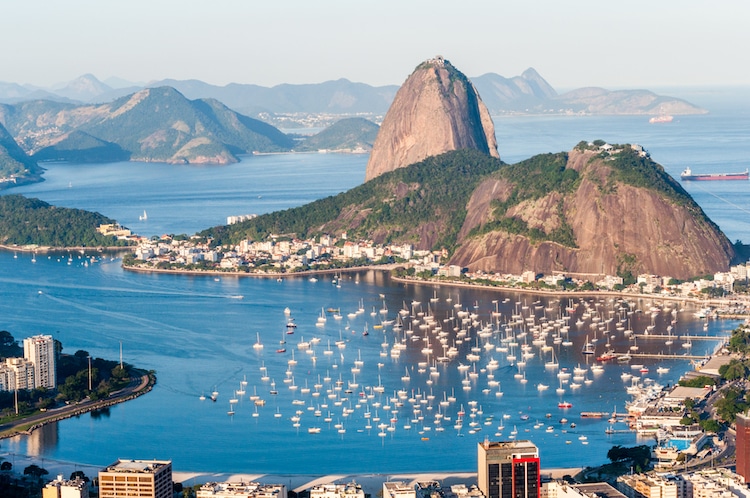
Photo: Rodrigo S Coelho via Shutterstock
Rio de Janeiro’s breathtaking harbor stretches 19 miles just east of the city. Guanabara Bay was discovered by Portuguese explorers on January 1, 1502. Some historians report that the city of Rio de Janeiro took its name from the harbor, which was originally called Ria de Janeiro (January Sound). Over 100 islands are scattered around the bay, but its diverse ecosystem has been damaged due to deforestation, pollution, and urbanization. Marine life includes a population of Botos, a rare dolphin considered a primitive dolphin.
What are the New 7 Wonders of the World?
In 2000, a campaign was started to seek out the New 7 Wonders of the World. A Swiss organization called the New7Wonders Foundation led the charge, asking the public to vote for their favorite sites. With the Great Pyramid being voted in as an honorary wonder, seven new sites were revealed in 2007. Tens of millions of people voted for a range of sites that touch all corners of the globe.
TAJ MAHAL
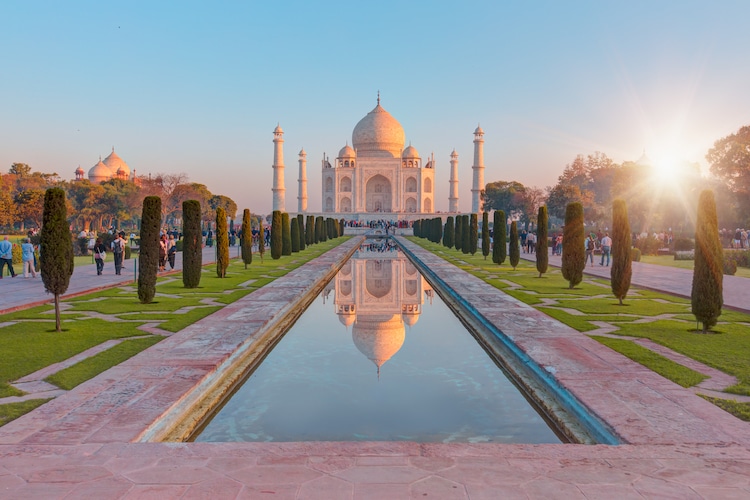
Photo: muratart via Shutterstock
GREAT WALL OF CHINA
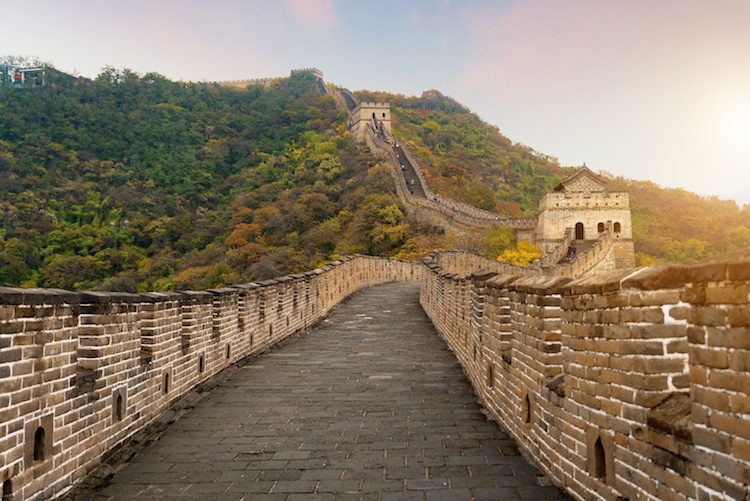
Photo: Prasit Rodphan via Shutterstock
COLOSSEUM
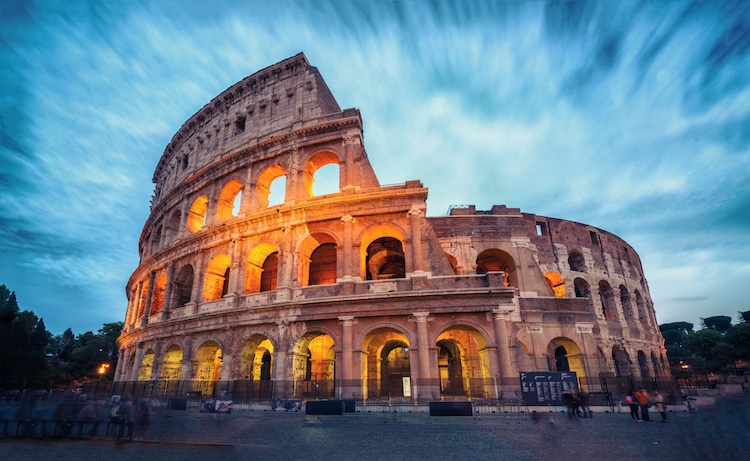
Photo: Blue Planet Studio via Shutterstock
MACCHU PICCHU
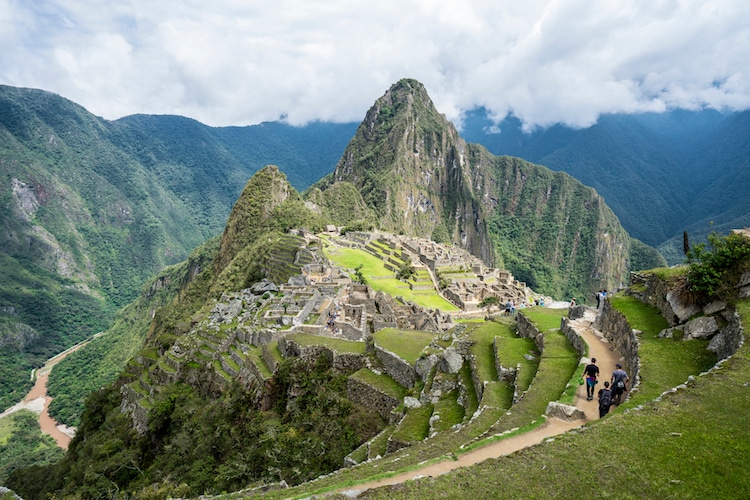
Photo: IvanGrabilin via Shutterstock
PETRA
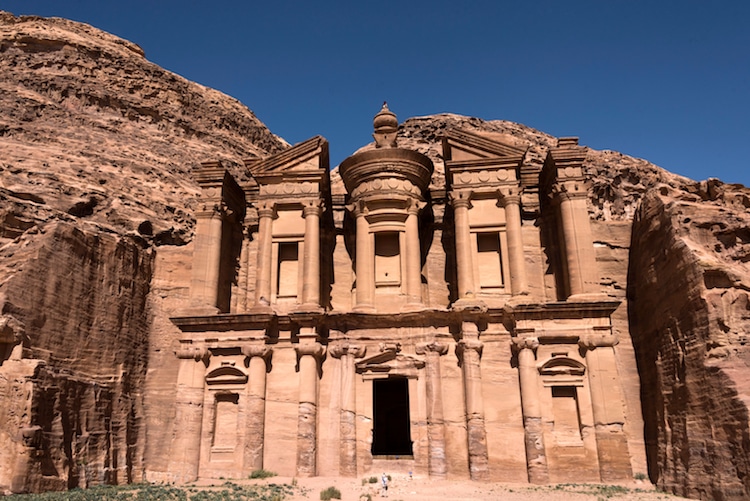
Photo: Joel Shawn via Shutterstock
CHICHEN ITZA
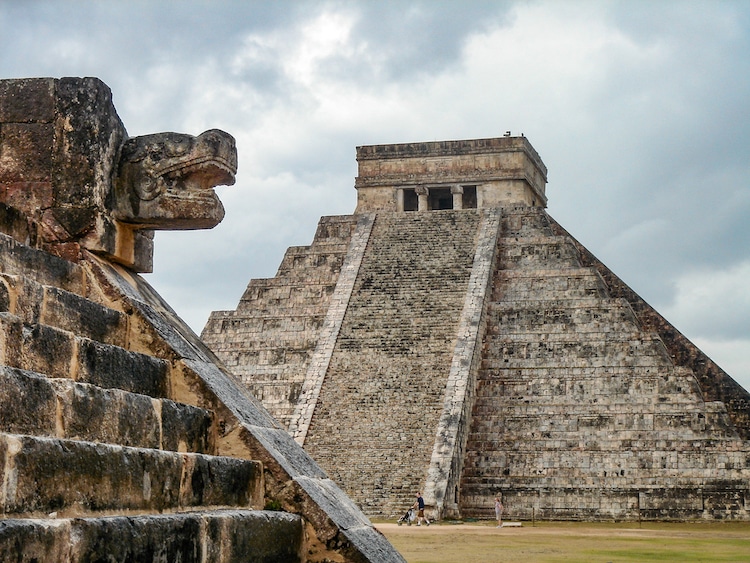
Photo: marktucan via Shutterstock

